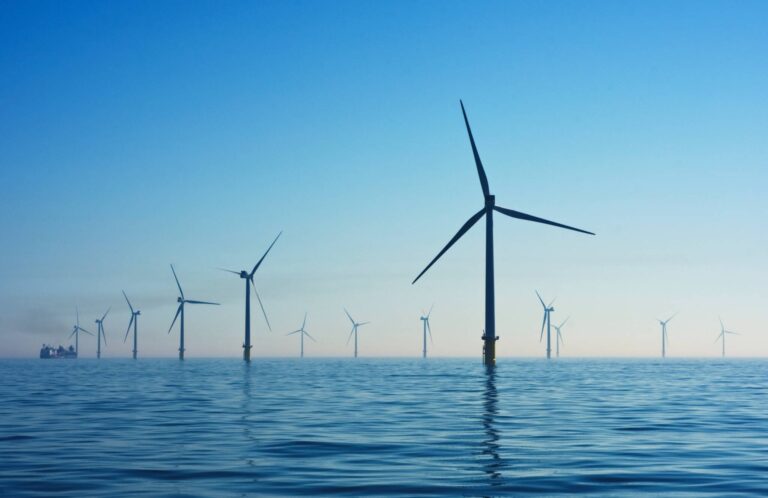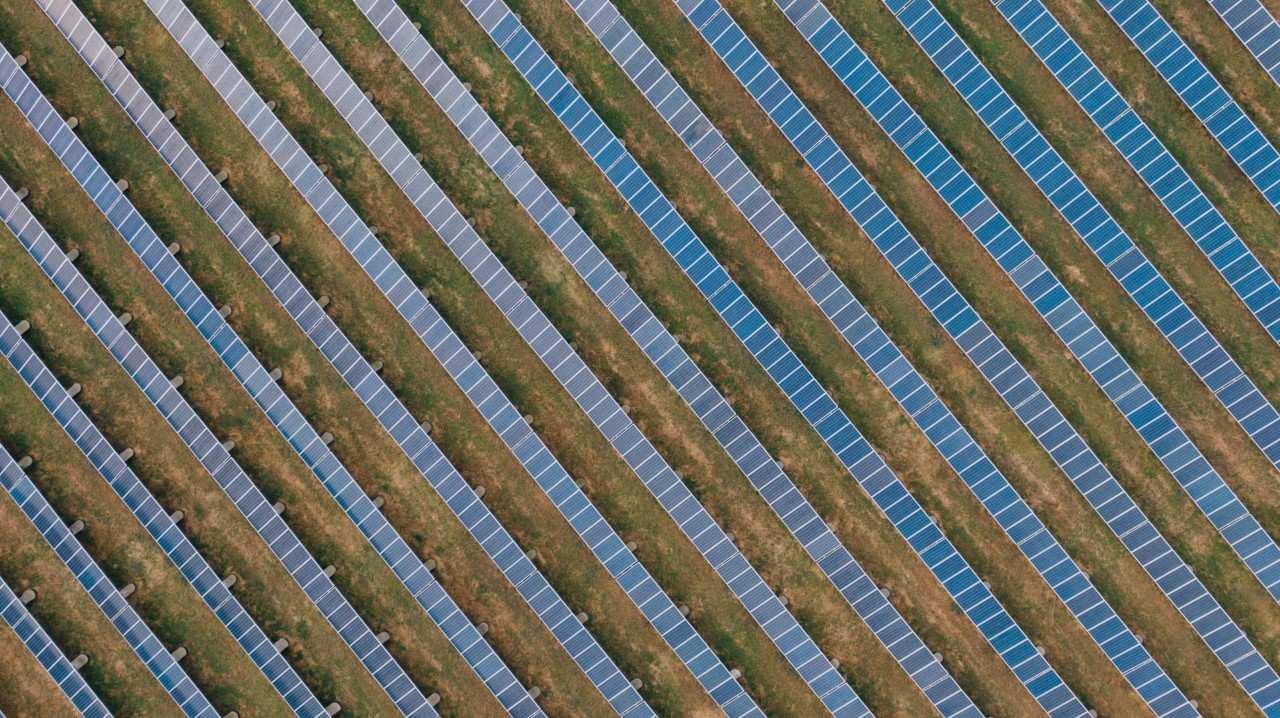By Caleb Conner – 12/20/22
Solar panels and wind turbines allow us to generate electricity without polluting our environment and atmosphere. They also depend on two resources, sunshine and wind, that while abundant, vary in supply throughout the day and are dependent on the season and weather.
Meanwhile, electric grid demand varies without consideration for when the sun shines and the wind blows. Electricity demand picks up in the morning and peaks in the evening when the sun is not at full strength. Wind turbine generation, separately, can peak or dip for days on end. As such, a grid largely or fully dependent on wind and solar would require a means to store excess energy when the moments the sun and wind are at their peak generating capacity do not match the peaks of society’s energy demands.
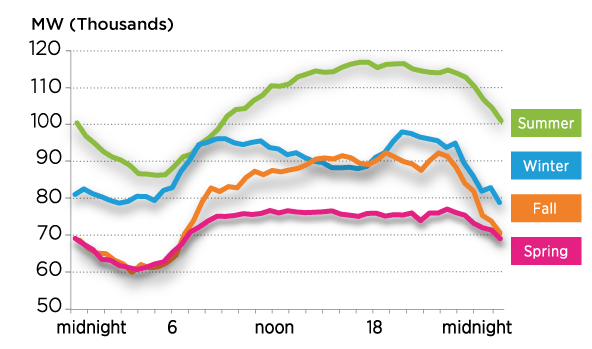
From an energy market competition standpoint, storage is also essential for wind and solar to compete with fossil fuel energy sources’ dispatch and related benefits. Fossil fuel power plants can typically rely on a steady supply of fuel that enables consistent generation and even the ability to match generation to demand. As a result, our grid currently depends on natural gas-fired “peaker plants” to meet peak demand, strengthening the image and reality of fossil fuels as central to our power grid.
Energy storage is one of the most important and often under-discussed factors in determining the speed of our transition to a 100% renewable grid. As detailed in MIT’s recent study The Future of Energy Storage, “energy storage enables cost-effective deep decarbonization of electric power systems that rely heavily on wind and solar generation without sacrificing system reliability.” Let’s take a look at the present state of energy storage.
The State of Energy Storage
A recent estimate from the National Renewable Energy Laboratory (NREL) suggests that by 2050, the U.S. will need between 213 to 932 Gigawatts (GW) of power capacity in energy storage. This would depend on the level of integration of solar and wind energy generation into our grid. As of 2021, the U.S. had around 23 GW of storage power capacity, a small fraction of what will be needed in the future. As shown in the chart below, new installations are expected to ramp up significantly over the next 5 years.
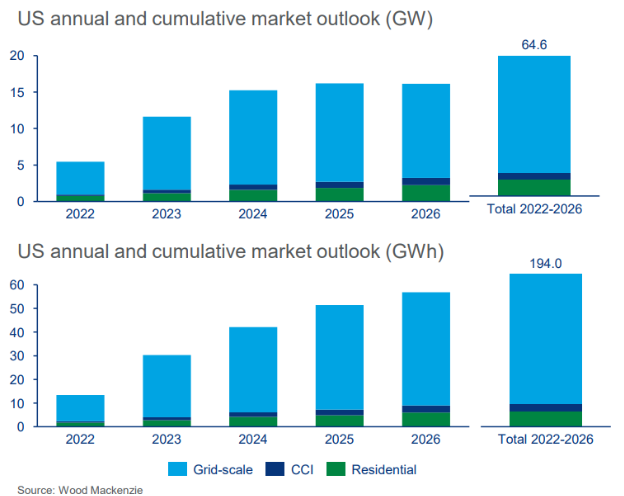
There are many ways to store energy. At a high level, those technologies can be broken down into 4 categories: electrochemical (e.g. batteries), chemical (e.g. hydrogen), thermal, and mechanical. All these technologies allow for the energy produced by variable resources like wind and solar at their peak generation hours to be utilized at times when those resources are scarce. 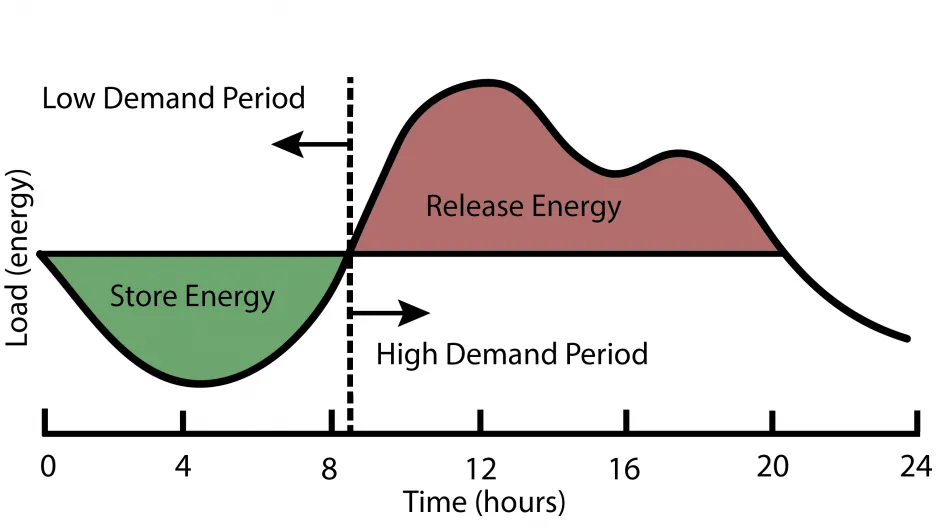 (University of Michigan)
(University of Michigan)
Pumped Storage Hydropower
Easily the most prevalent energy storage option in the current moment is pumped storage hydropower (PSH), in which electricity is used to pump water uphill into a reservoir behind a hydroelectric generation facility. The water is then stored until extra generation is needed. In 2021, PSH represented 93% of the total rated power of energy storage in the U.S. PSH has massive energy storage potential, including long-duration storage capability not available with batteries. However, it requires an extremely high level of initial investment, as well as a favorable geographical situation, to construct—not to mention that these projects have huge footprints. These factors help explain the discrepancy between PSH’s present prevalence and its minority status among new projects.
Batteries
Batteries tend to get the most attention of all the energy storage technologies currently available, and for good reason; unlike PSH and most other mature energy storage technologies, batteries can be installed in essentially any locale, without need for favorable hydrological or geological resources. They can also be practically built at a variety of scales, from small residential storage to massive utility-scale projects. As such, they are under construction in the U.S. at the highest rate of any energy storage technology: the U.S. Energy Information Administration (EIA) projects battery storage alone (currently around 7.8 GW) will increase to 30 GW by 2025.
Most of the utility-scale batteries being built today use lithium-ion technology, which is an enormous technological innovation that has allowed for great advancements in battery storage, including use in most electric vehicles. Some new grid-scale battery storage facilities are even being built with Tesla “Megapacks,” made with Lithium-Ion technology. These batteries require rare materials (including lithium, cobalt, manganese) that can only be mined in certain locations, leading to increased costs that are unlikely to decline. Worse, the mining of these materials has been linked to toxic pollution and water contamination, as well as dubious labor standards. As such, the importance of alternative battery technologies is high as we seek to create renewable energy infrastructure that embodies a strong commitment to environmental justice. As such, the importance of alternative battery technologies is high as we seek to create renewable energy infrastructure that embodies a strong commitment to environmental justice. commitment to environmental justice.
Although lithium-based batteries are likely to remain prominent in the short- to medium-term, there are several exciting technological advances that may help mitigate the negative externalities sooner rather than later. For one, engineers at the University of Toronto have developed an innovative new recycling method for lithium-ion batteries that utilizes readily available carbon dioxide to efficiently extract rare earth metals from these batteries without using hazardous chemicals or generating toxic waste as existing recycling methods do. More recycling would mean less need for mining.
Meanwhile, perhaps the most exciting alternative researchers are developing is sodium-ion battery technology. A fully realized sodium-ion battery would resolve many of the issues that face lithium-ion and other technologies, as sodium is globally abundant, cheap, and more environmentally friendly. Recent innovations in sodium-based battery research are promising, although these batteries are still many years away from commercial production.
Other Tech: Hydrogen, Compressed Air, etc.
Many other storage technologies are available, including hydrogen and compressed air. There are also many possibilities for future technologies that may more efficiently actualize the basic idea of energy storage: using electricity generated by variable renewable sources at peak times to drive a process that creates potential energy, later to be reversed to bring power back onto the grid.
Among existing technologies, hydrogen-based options show a great deal of promise. Electricity can be used to power electrolysis (splitting water into hydrogen and oxygen). The hydrogen produced can then be stored for use as a fuel, both for generating electricity and for various industrial purposes.
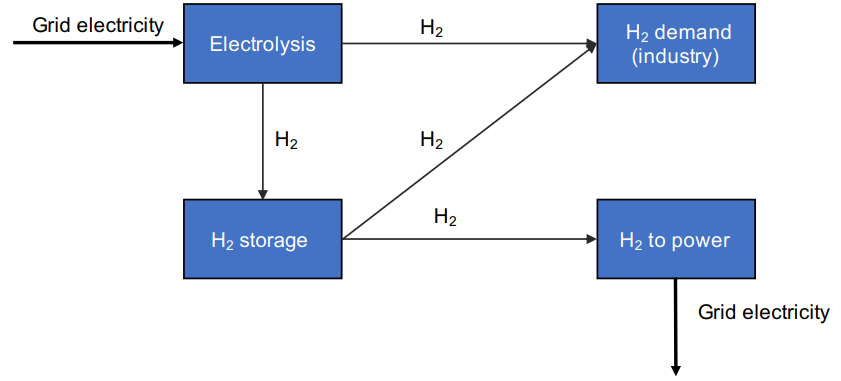 (MIT )
(MIT )
Another option is compressed air storage, which has been in use since the 1970s. Electricity is used to compress air, which is then stored under pressure. When electricity generation is needed, the compressed air can be expanded in a turbine, driving a generator for power production. A similar technology using CO2 has recently been developed and is in the preliminary stages of commercial implementation. Energy storage technologies like these that use abundant resources like air, water, and CO2 are especially appealing because of their independence from the hazards of battery production and disposal.
The future of energy storage will play a significant role in determining the pace and robustness of the green energy transition. Each of the energy storage technologies mentioned above will likely play a role in that future, along with technologies not yet invented or discussed here. In the meantime, now is a great time to do what you can to support the proliferation of wind and solar generation—such as getting renewable electricity from The Energy Co-op—to help build a plurality of renewables in our local and national electricity mix.


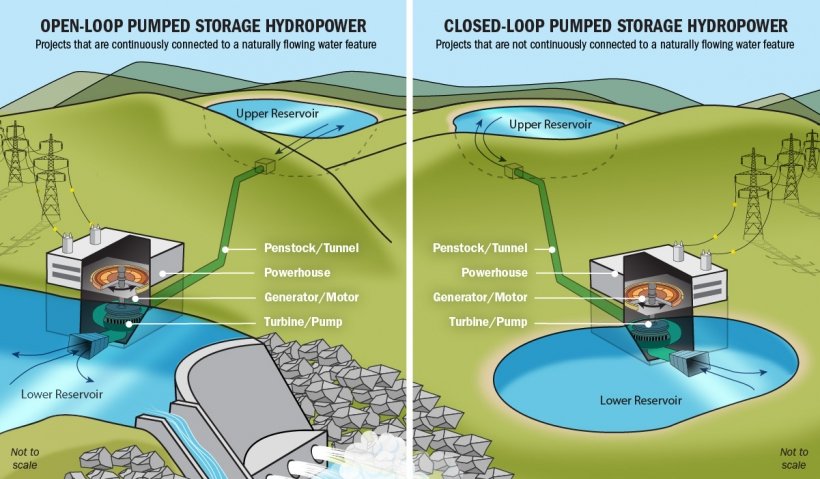 (Department of Energy)
(Department of Energy) (
(
